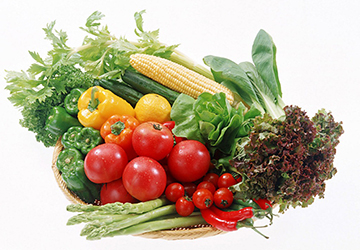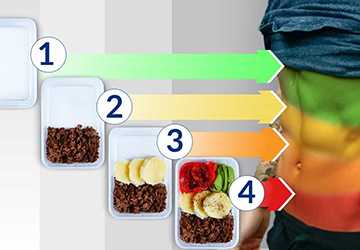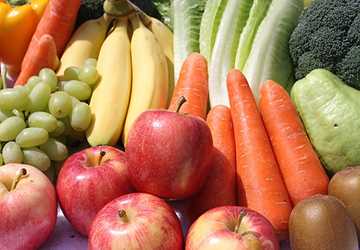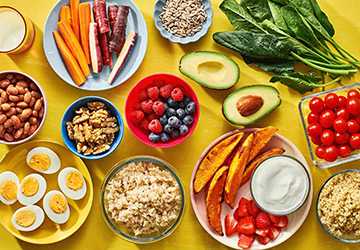How to Design a Nutrition Plan for Weight Loss Success
Losing weight is a top goal for countless people, and an extremely effective way to shed excess pounds is to develop a well-thought-out nutritional strategy carefully. While losing weight can feel overwhelming, creating a structured eating plan doesn't have to be daunting.

In fact, with proper guidance, you can create a nutritional plan that will pave the way for your weight loss success. This article breaks down the process into six steps to help you achieve a healthier, slimmer body. These steps will enable you to take control of your eating habits and ultimately achieve your weight loss goals. So, let's look at these simple yet powerful guidelines that will help you transform your life.
Set Yourself Clear Goals
The first step in developing a successful weight loss diet plan is to set clear and realistic goals. Defining what you want to achieve will provide you with direction and motivation. Make sure your goals are precise, quantifiable, and practical.
For example, instead of setting a vague goal like "I want to lose weight," you could say, "I want to lose 15 pounds in three months." ” This specific goal gives you a target to work toward and makes your progress toward your goal easier to track.
Additionally, it's essential to consider why you want to lose weight. Whether it's for health purposes, to enhance self-esteem, or in preparation for a special event like a wedding or vacation, understanding the underlying "why" behind your weight loss journey can motivate you during challenging times. Write your goals and make them visible to remind you of your commitment.
Calculate Your Daily Calorie Needs
If you want to lose weight, it is crucial to establish a calorie deficit, which entails consuming fewer calories than what your body requires to maintain its current weight. Calculating your daily calorie needs is critical for developing a weight-loss diet plan.
There are different ways to determine your daily calorie needs. However, one of the easiest ways is to use an online calculator or consult a registered dietitian.
Once you determine your daily calorie needs, you can plan your meals and snacks strategically. A daily caloric deficit of 500 to 1,000 calories is recommended as a general guideline. This approach promotes a sustainable weight loss of approximately 1 to 2 pounds per week.
Choose Nutritious Foods
The nutritional value of calories consumed corresponds to the quantity. Eating nutrient-dense foods will help you achieve your weight loss goals and provide your body with the nutrients it needs to stay healthy. Nutritious foods are rich in vitamins, minerals, and other beneficial compounds while being low in calories. Here are some examples:
Fruits and vegetables: Fruits and vegetables are rich in essential vitamins, minerals, and fibre, which keep you feeling full and help lower your overall calorie intake, keeping you satisfied.
Lean Protein: A diet with lean protein sources such as chicken, turkey, fish, tofu, and beans can help maintain muscle mass and improve metabolism.
Whole grains: The complex carbohydrates and fibre in foods like brown rice, quinoa, and whole-wheat bread support stable energy levels.
Healthy fats: Avocados, nuts, seeds, and olive oil are rich in healthy fats that not only promote overall health but also play a role in appetite control.
Avoid or reduce your intake of foods high in added sugar, saturated fat, and trans fat, as these foods are high in calories and have very little nutritional value. Also, be mindful of portion sizes and avoid overeating, as even healthy foods can lead to weight gain if consumed in excess.
Once you've calculated your daily calorie needs and identified nutrient-dense foods, it's time to plan your meals. A nutrition plan can help you stay on track and make healthier daily choices.
Start by dividing your daily calorie intake into three main meals (breakfast, lunch, and dinner) and two to three snacks. To ensure you get a balanced supply of nutrients, include a variety of foods in your diet. When planning your meals, keep these tips in mind:

• Add a lean protein source to each meal: Protein helps you feel full and satisfied, preventing overeating.
• Fill half your plate with vegetables: non-starchy vegetables
• Excellent choice for weight management as they are low in calories while providing a rich source of essential nutrients. Pay attention to portion sizes: Use measuring cups or a kitchen scale to measure portions to avoid overeating accurately.
• Choose whole grains over refined grains: Whole grains are rich in nutrients and fibre, providing essential nutrients that help maintain a feeling of fullness and help control appetite.
• Avoid skipping meals, as this will cause you to overeat later. Instead, create a consistent schedule with balanced meals and snacks throughout the day.
Monitor Your Progress
Working on a weight loss diet plan and monitoring your progress is critical to success. Record your diet, physical activity, and weight or body measurement changes. It will help you monitor your progress and identify any areas needing change.
Remember, weight loss isn't always linear. Fluctuations may occur due to water retention, hormonal changes, or muscle building. Don't just rely on the scale; pay attention to how your clothes fit and feel and other accomplishments beyond the scale.
Adapt and Stay Consistent
When you begin your weight loss journey, it's essential to maintain flexibility and firm consistency. Your initial meal plan could be better. So, be prepared to make adjustments along the way. Listen to your body's signals and embrace new foods and strategies if something isn't working as expected.
When it comes to losing weight, consistency is critical. Stick to your eating plan even if you feel like overeating or feel depressed. Remember, setbacks are natural and do not determine your overall progress. Keep your long-term goals in mind and commit to making healthier choices.
Conclusion
In summary, creating a successful weight loss diet plan is manageable and achievable if you follow these six simple steps. Successful weight loss requires several essential components: setting specific goals, determining daily calorie needs, choosing nutrient-dense foods, organizing meals, tracking progress, and maintaining flexibility and consistency.







